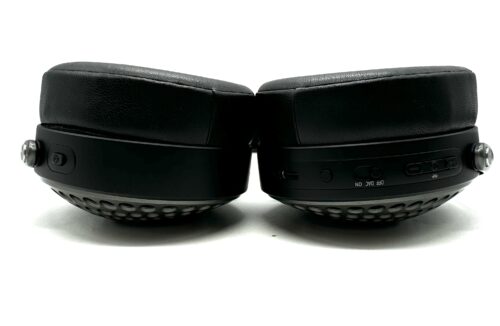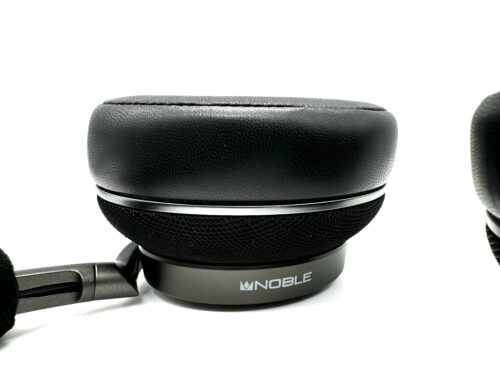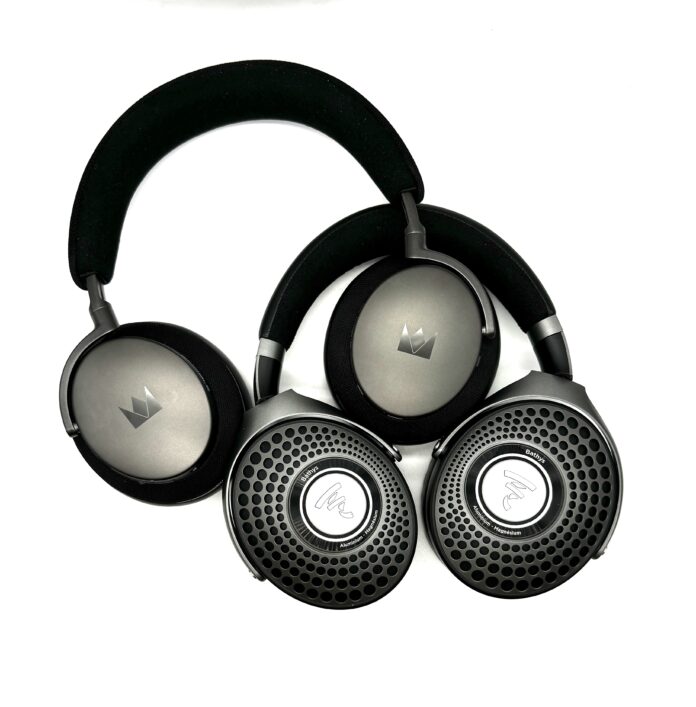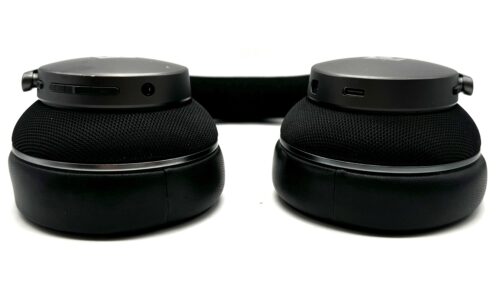Focal’s Bathys headphones have long been the bridge to higher fidelity listening in luxury wireless headphones. At $699 they stand right between the premium sets made by Sony and Sennheiser, and the high end sets by Mark Levinson and Dali. But now there is a new player in this price range: the Noble FoKus Apollo. Coming in at a competitive $649, listeners will want to know how the two sets of cans compare head on. Given the closeness in price but completely different designs, this made for a pretty interesting head-to-head. So stay tuned to see which pair is the right one for you.
What’s in the Box:
| Noble FoKus Apollo | Focal Bathys |
|
|
Build:
The build philosophies for each of these headphones are quite different from each other. The Bathys stays in line with the chunkier frame of the rest of Focal’s headphones. Meanwhile the Apollo takes a more subtle, mesh-inspired approach. But even though it’s layered in mesh and leather, it still has a solid frame made from anodized aluminum. The ear pads are made from memory foam and wrapped in protein leather. Notably, the pads are swappable.
The Bathys is also constructed around an aluminum frame, which works with magnesium yokes and real leather on the headband to offer a real luxury feel. Another nice touch by the Bathys is that its logo lights up when powered on. I’m sure it doesn’t help in the battery life department, but it’s a cool and high-end feature nonetheless.
Both headphones have standard power, ANC, and playback controls, though one unique feature you’ll notice when working through the Bathys’s switches is a DAC mode. Yes, you can pass through audio at the line stage and use the headphones as an external DAC if you wanted to. But the Apollo has a hidden feature too! A detachable boom mic for gaming and calls.
Both the Apollo and Bathys give you a taste of the added features you can get in the higher realms of wireless audio. I do find the mic more useful than the external DAC feature, but in general, I think the build is a toss up. On one hand, the Bathys seems more robust, but at the cost of being a bit clunky for portable use. On the other hand, the Apollo is a little bit lighter and more portable, but at the cost of some of the strength the Bathys offers. So it comes down to your personal preference, as it often does.

Design:
The design on the Apollo is notable because of its patented hybrid dual driver arrangement. Using a 40mm dynamic driver and a 14.5mm planar magnetic driver, the headphone looks to combine the strengths of both types to create a coherent sound. With the dynamic driver covering bass response and the planar covering treble, Noble has taken an innovative approach to its technical framework.
The Bathys is a little bit more standard in its approach, though it performs no worse because of it. Focal employs a 40mm Aluminum/Magnesium ‘M’-shaped dome driver, which the company proudly makes in France. Focal aims to use trickle down techniques from its higher end headphones and meld them with techniques that match the limitations of portable headphones. Ultimately, they aim to give a seamless Focal-worthy experience, even on its wireless headphones.
Providing ANC on the Apollo is a QCC3084 chip, which significantly reduces ambient noise levels from -20dB to -35dB, allowing users to focus on their audio without distractions. Additionally, the Transparency Mode, powered by the upgraded ANC chip, ensures that users can remain aware of their surroundings when necessary.
Similarly, Focal offers Silent Mode (true noise canceling), and Soft Mode (reduced noise canceling), as well as Transparency Mode, which works like any standard transparency mode.
I found both headphones to be about the same in terms of noise canceling. Soft Mode is a nice extra control, but it doesn’t necessarily propel the Bathys past the Apollo. As far as drivers are concerned, we’ll have to save those results for the sound impressions.

Battery:
Battery is a blow-out. The Apollo offers up to 80 hours of life with ANC turned off and 60 hours with ANC activated. Though it does not supply quick-charging capabilities, it’s an impressive load, and one that the Bathys does not meet.
The Bathys is no slouch, but offers far less battery life. It does 30 hours with Bluetooth and ANC activated, 35 hours when used with a headphone jack, and 42 hours when used solely as a USB DAC. The Bathys does support quick-charge.
All told, I have to give this one to Noble.
Bluetooth:
Bluetooth is fairly straightforward. The Bathys offers Bluetooth 5.1, which is a little older than the Apollo’s newer Bluetooth 5.3. Both will get you codecs like SBC, AAC, Apt-X and Apt-X Adaptive, but you’ll also get LDAC with Noble. Both do support multi-point connection.

Sound Impressions:
Low End:
The low ends on these headphones take quite different approaches. Both have dynamic punchy low end, but where the Apollo delivers in quantity, the Bathys goes for a more reference-tuned bass response. The Apollo has a hefty bass kick with an elevated midbass bloom. This will be ideal for bass-heads, or listeners who prefer a more exciting music experience. On the other hand, those who prefer a more “audiophile” or neutral sound may prefer the Bathys. Personally, I like both. The warmth and slam of the Apollo is really engaging while the more natural bass response of the Bathys is clear and smooth.
Mids:
Both the Bathys and Apollo have a spike in the upper midrange, but that’s about all they have in common here. Due to its dynamic driver handling low-mid frequencies, I got a more lush and warm midrange presentation from the Apollo. Meanwhile on the Bathys, things were a bit dryer and more meticulous. Overall the Apollo is more musical but lacks some of the detail and refinement the Bathys offers.
Top End:
The treble is where things get a little more similar, which is surprising because it’s also where the headphones use two different types of drivers. They’re both more neutral and detail oriented. Oddly enough, I did find the top end of the Apollo to feel a little more resolving and clear. The Bathys’s treble is in line with the reference tuning of the headphone, but feels dull in comparison to the Apollo.
Soundstage:
The Apollo has a wider soundstage that feels more immersive, though the imaging feels less natural than that of the Bathys. Like has been the theme all along in these sound impressions, it really comes down to fun and engaging vs neutral and accurate. For the former, choose the Apollo. For the latter, the Bathys may be more suitable.
Final Thoughts:
While the price points of these headphones are quite similar, the performance is quite different. While the Apollo does have a clear advantage in bluetooth and battery and the Bathys takes the cake on build, sound is a bit less clear. It all comes down to your preferences. But one thing is for sure: they’re both great headphones. So if you want a warm and fun headphone, check out the Apollo. And if you want your wireless experience to match that of a reference setup, check out the Bathys. And if you’re still not sure, check them both out! They’re both worth it.
The Noble FoKus Apollo and Focal Bathys are available at Audio46.
MAJORHIFI may receive commissions from retail offers.









